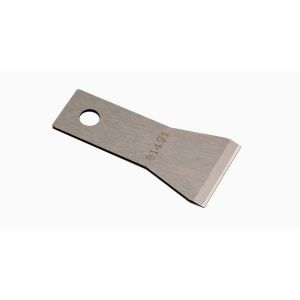ANTEC

Plastics are everywhere. From grocery store bags and most shopping carts to single-use cups and food packaging, you just can't get away from it. According to the non-profit, Plastic Oceans, the world manufactures 300 million tons of plastic each year. When you think about 300 million tons of something, it is difficult to picture the reality of what that means.
To put it into perspective and add a visual element, here are some things that weigh approximately just one ton. Picture them in your mind as you read this list: fully grown brown bears, adult polar bears, a small car, or a shipping container. The thought of the size of these things when multiplying by 300 million is overwhelming. Yet, that's the amount of plastic the world creates every single year. What makes this figure even more overwhelming is that over half of these plastics are for single use only.
Where Does the Plastic Go?
As our use of plastics increases so does our need for places to discard the waste. Consider this. Worldwide, approximately one million plastic bottles are bought each minute. It's a staggering figure!
This is where the importance and value of recycling come into play. Recycling the plastic we're using keeps it out of the landfills and helps save the environment from chemical contamination as plastics break down, aids in beautification with less litter, and saves ocean wildlife all while enabling consumers to continue using plastic.
What is the Plastics Loop?
The idea of the “Plastics Loop” is the creation of a circular economy that reduces the production of new plastic through the use of recycled products that already exist. It’s an opportunity to save billions of dollars and break away from producing new plastics that consume fossil fuels.
The infographic below provides a visual representation of how the plastic loop flows from the production of virgin polymer pellets produced by companies like DuPont, BASF, and SABIC. These pellets are sent to compounders who melt the pellets down and add colors, glass strands, and other enhancements. The product is then re-pelletized and sent to manufacturers of vehicle plastic parts, television cabinets, and various plastic components.
When these products reach end-of-life, the plastic material is recycled to create pens, trash cans, gas containers, and other plastic products. In an ideal scenario, this plastic never makes its way to a landfill and is continually re-birthed into new products.
Where Do Industrial Machine Knives Fit Into the Plastics Loop?

Everywhere! Each stage of the Plastics Loop requires industrial knives and blades and American Cutting Edge engineers a cutting solution for each. ACE creates the blades used by petrochemical plastic production sites to transform the base chemicals into virgin plastic pellets using underwater pelletizers. These virgin pellets are then sent to compounders for further processing.
Compounders use industrial knives from ACE when introducing additives into the polymers, giving the new plastic pellets the desired physical properties depending on how and where they will be used. Another step in the Plastics Loop is the use of ACE brand knives in the production of products from the formed plastic. Finally, ACE brand blades are utilized by plastic recyclers to begin the process anew by granulating plastic bottles, molded parts, film, packaging, and other plastic materials so that it can re-enter the Plastics Loop.
Why ACE?
ACE understands every stage of the Plastics Loop and that gives us a unique insight and knowledge that few suppliers can offer. We know exactly how blades respond to plastic materials of all types and how the changes that occur to this material throughout the Plastics Loop drive changes to blade materials.
Experience has taught us that raw materials make a tremendous difference in knife performance. For example, when granulating applications require D2 Tool Steel we use true 1.2379. This distinction prevents our customers from unknowingly deploying potentially brittle knives. Brittle knives increase the likelihood of chips and breakage which contribute to increased downtime, costs, and maintenance, all of which detract from cost-effective and efficient recycling efforts.
100% Reclaimable Plastic as a Resource is Possible
Reducing the amount of plastic that enters landfills and oceans is everyone’s responsibility. The most valuable contribution ACE makes is the optimization of blades used by recyclers to improve efficiency and make it more cost-effective for our clients to support a healthy Plastics Loop.
To do this, we provide expert coaching and process analysis that focuses on boosting production while reducing the costs associated with maintenance and downtime. We perform failure analysis to understand why blade breakdowns occur and offer best-fit recommendations for improvement. We take a holistic approach to assessing your cutting application, evaluating both dies and rotors to expose performance and optimization opportunities.
Consequently, our clients routinely experience decreased premature wear, a reduction in uneven die wear, and cost savings while improving production, safety, and machine performance. Often, our deep experience results in blade selections that provide higher wear resistance, longer life, and better performance than OEM blades.
Contact our industrial knife experts today to learn how blade optimization can improve your plastics recycling operation and keep your organization in the Plastics Loop!




